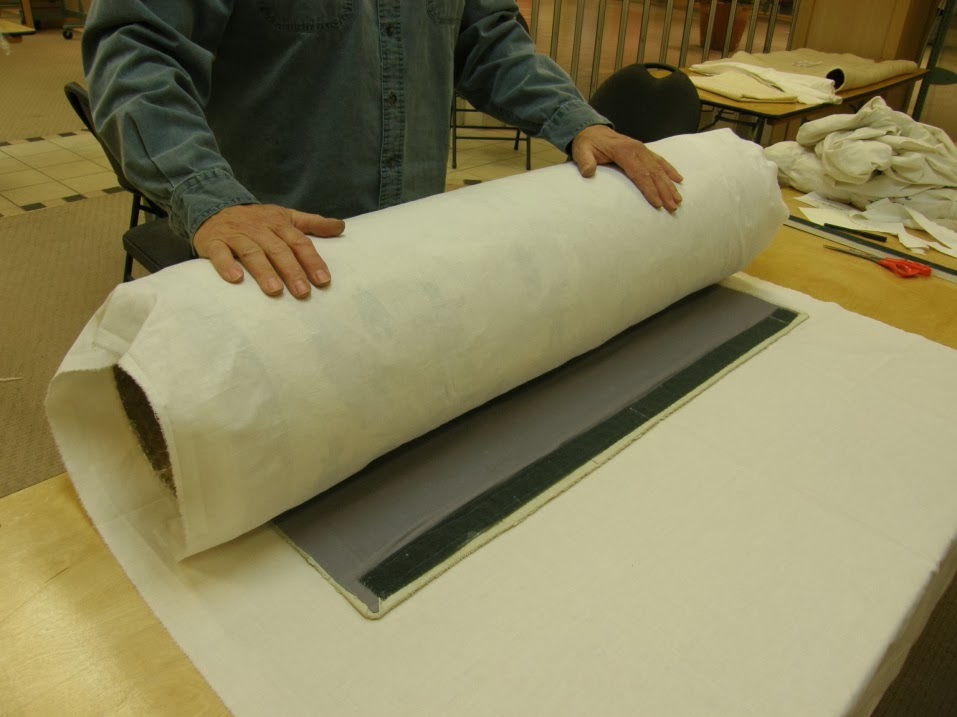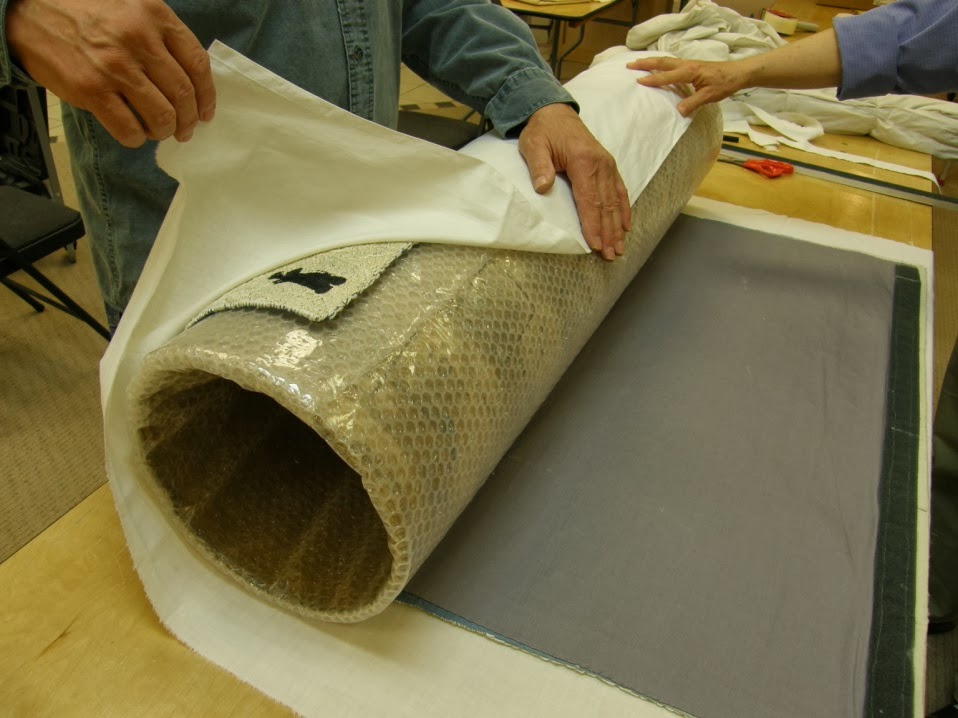Submitted by Judy Haraldson: Professional Craftsperson: Fibre, Former Exhibitions Coordinator, Saskatchewan Craft Council
While working for the Saskatchewan Craft Council in the Gallery / Exhibitions area for 10 years, I’ve seen some good packing of handcrafted pieces and a fair bit of bad packing. The reason for packing textiles or any craft object properly, is to protect it from damage. Similar ideas and methods apply when packing for storage or packing for shipping.
The kinds of damage you want to protect your pieces from suffering include: mechanical, dirt, fluids, light, chemical, molds, and insects. Mechanical damage of textiles involves cutting, creasing, tearing, snagging, and sagging. Damage from dirt includes dust and any residues from body contact. Fluids are water, mostly, but also could be humidity and other liquids like oils and solvents. Light damage can be fading of dyes and fibre breakdown. Chemical damage in this case results from contact with acid-bearing wood and paper products, as well as metal which can rust. Molds include mildew. Insect damage is a concern to all fibre lovers. Hazards abound!
There are a few general themes for packing textiles. Start clean and keep it clean. Prevent creasing. Keep it dark and dry. Don’t let it touch damaging surfaces. Watch for bugs and get rid of them. Put it in sturdy containers. Use breathable covers for long storage. Use water resistance covers for shipping.
Clean is pretty straightforward; clean it before packing and cover it from dust. This can also include keeping the textile dry and out of the light. Make sure it is completely dry before packing and store it in low humidity. For long term storage, covers and containers should be breathable. Shipping involves other considerations and less permeable materials should be used.
Protection from damaging surfaces is less obvious. Wood and many paper products contain acids which, over time, can discolour and / or break down fibres in contact with them. Painting wood with water-base urethane or latex paint provides protection. Use acid-free paper products or use protective liners to prevent direct contact with the textile. Cloth covers should be washed unbleached cotton; old white cotton sheets work very well. Metal surfaces can rust or oxidize and stain textiles; again, use protective liners. Plastics are neutral inert surfaces.
There is lots of information on fibre-damaging insects and what to do about them. Isolate the infested or suspicious textile and kill the culprits by the method least harmful to the textile. Repeated deep freezing works pretty well. Mothballs are no longer considered to be very safe. Insecticides require a lot of caution. Inspect long term storage conditions regularly.
Containers for textiles need to protect from mechanical, chemical, and fluid damage. For shipping, sturdy cardboard boxes with plastic covers on the textile are fine. Plastic containers are very good for shipping. For longer storage of textiles, drawers that have been painted with urethane are best. Plastic containers can be used but textiles should be taken out and inspected and aired every so often. Cardboard containers must be lined with neutral materials.
Creasing results from folding textiles and can strain fibres causing them to weaken and eventually break. Keep small flat textiles (eg. runners, doilies) as flat as possible; if you need to fold them, pad the fold. Large or long flat textiles can be rolled and covered. Use a cloth covered rolling tube, and roll carefully without creases. Make sure the roll is large enough in both diameter and length. Tapestries and pile textiles are rolled face out, i.e with the back toward the roll. Textured textiles (eg. beaded or embroidered) need padding between the layers whether folded or rolled.
Garments require some special considerations. For long term storage, laying out flat puts little strain on seams and hanging parts, but folds must be padded to prevent creasing. Acid-free tissue paper rolls or fabric pads are best. Shipping a garment involves making it as compact as possible while keeping creasing to a minimum, and protecting it from mechanical and fluid damage. Plastic tote boxes, cotton cloth covers and pads, or zippered sweater bags in sturdy cardboard boxes are some methods. If your garment is going to be unpacked and repacked, include specific and clear instructions with photos or diagrams to ensure it is done right.
Three-dimensional objects need special packing for shipping, especially if they are fragile. Framed pieces should be covered with bubble pack, then packed in a box large enough to include packing materials on allsides. Irregularly shaped pieces should be packed in such a way that extending bits are supported and the object cannot shift within the packing materials. Bubble pack envelopes are good for tiny objects. Styrofoam chips are good packing material, but if possible, contain them inside plastic bags.
There is quite a bit of information out on the Internet about textile conservation and storage. Here are some web sites to check out:


